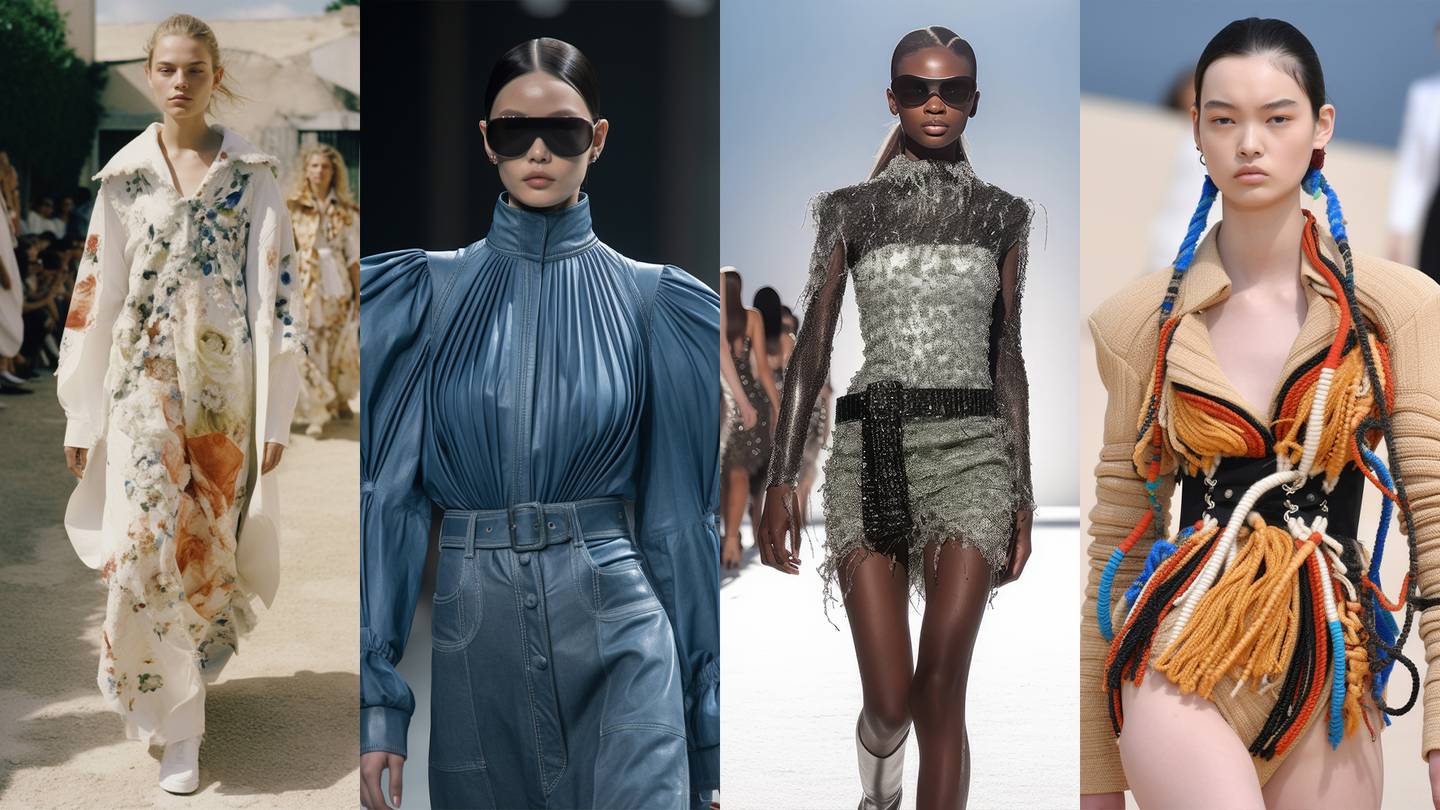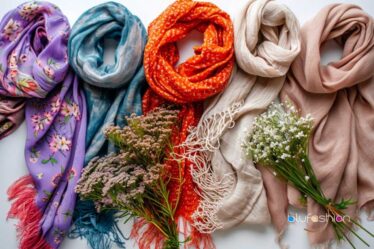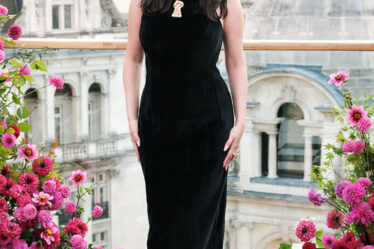
The model, set against a desert backdrop, glares into the camera. She’s wearing a cream-coloured knit turtleneck, the bottom of which is four stacked layers of different textures and colours that tuck into a pair of high-waisted leather shorts. Rainbow-hued braids run down the shoulders and loop around the arms.
The image, which looks realistic down to the loops of yarn and the sheen on the shorts, could easily be a photograph. But if you look closely, there’s a clear giveaway that it isn’t. The belt, rather than being two overlapping ends that join with a buckle, looks like a single strip of leather in the front with random hole patterns. The edge of the buckle merges into the leather. The artificial intelligence that produced the image got the general appearance of a belt but didn’t understand how one actually works.
The look, from designer Alena Stepanova, is one of hundreds shown recently at AI Fashion Week — not a week so much as a day and a half during which audiences could tour a room at New York’s Spring Studios filled with screens presenting different submissions. Maison Meta, a creative agency that uses generative AI, organised the event with support from Revolve, which will produce the collections of the three winning designers.
Unlike Metaverse Fashion Week, which still looked clunky and a long way from its dreamed-of potential, it offered a convincing showcase for AI-generated fashion, which is impressive even at this early stage.
The clothes ran the gamut from realistic ready-to-wear, such as a model in what looked like a gold-sequined top and glitter-spattered jeans, to sci-fi couture with otherworldly shapes and materials. Stepanova’s work was among the standouts. The colours and intricate craftwork — if you can call it that — invited your eye to trace all the details. Another designer, Davide Minganti, also had some eye-catching but very different knits. Who knew AI would be so good at generating knitwear?
Cyril Foiret, founder of Maison Meta, said about 70 percent of the designers used the AI image generator Midjourney to produce their collections. They need to be as descriptive as possible with the text prompts they enter to produce the images, describing the clothes as well as the surroundings and specific details, according to Foiret, and it isn’t easy producing a collection of several different but consistent looks.
“We do not know their exact prompts and I know some are being pretty secretive about it. Like their ‘secret sauce,’” he said over email.
The AI Fashion Week guidelines also encouraged them to use Photoshop if needed to correct “faces, fingers and AI fails.”
The models and backdrops, also AI-generated, spanned a range as well. The models created by designer Junie Lau, for example, included elements of comic-book illustration. Many designers opted for realism — maybe a little too much so. With a few exceptions, the AI models were mostly the thin, high-cheekboned types that dominate runways today.
Outside Spring Studios during the event, Ravi Singh, who submitted a collection that ultimately wasn’t chosen, protested the lack of representation for certain groups, including South Asians and people with disabilities. One danger of AI is that it will replicate existing biases if users aren’t vigilant.
Just like a real fashion week, some collections were better than others. There were ideas that seemed well executed but not especially new. On the other hand, where the clothes leaned too far into the fantasies AI is capable of producing, it could look more like costume than fashion that real customers will want to buy and wear.
Manufacturing the clothes AI is able to generate may be one of the big challenges introduced by the technology. Historically, designers have sketched ideas, produced samples and then shown them to the public. AI Fashion Week flips that sequence so the audience sees a look finished and styled on a model first. Then someone needs to figure out how to actually make it, running the risk of the final garment falling short of the original concept. (For companies just using AI behind the scenes to generate new designs, that wouldn’t be an issue, though they might still be challenged at times to produce designs created by algorithms that don’t think about pattern-making or fabric types.)
“There’s no doubt that there will be unique challenges both from a construction as well as a materials level,” said Michael Mente, co-founder and co-chief executive of Revolve. “We’ll really have to challenge the team, but we’re very excited about that aspect of pushing things forward.”
Mente noted that, when Revolve and Maison Meta recently collaborated on an AI-generated capsule collection, Revolve ended up having to hand-paint one leather jacket to replicate the intricate graphics in the original design. But he said just as brands will often produce toned-down commercial versions of their dramatic runway looks, the same will be the case with AI designs. The original is great for storytelling and provoking emotion, but the version in stores could be more sellable. Foiret said they also instructed designers to consider ready-to-wear items and not just haute couture.
Voting to select the collections Revolve will produce takes place in three rounds. First, the public will make their choices over the next few weeks via the AI Fashion Week site. The top 10 collections will then go before a jury panel, which picks the three winners. The judges include industry figures such as Mente; Pat McGrath; Celine casting director Natalie Hazzout; Erika Wykes-Sneyd, who oversees Adidas’s web3 studio; Matthew Drinkwater, head of the innovation agency at the London College of Fashion; and more.
Foiret said they received submissions from more than 400 designers and selected which would show based on criteria such as the overall aesthetic and consistency of the collection. On the AI Fashion Week site, 133 collections are currently on display for viewers to vote on. The designers range in age and background. Many are not trained in fashion and don’t work in the industry. A New York-based civil rights lawyer who asked to be identified by the pseudonym “Fran” for professional reasons told the New York Post she only learned to use AI image generators last summer in her free time.
Maison Meta is already planning future seasons that will include physical runway shows with the products from the previous season that made it into production. It’s also working on an incubator programme with Revolve to help the designers launch full-fledged brands. Foiret said the hope is that, after AI Fashion Week, a designer could one day show in Milan or Paris, while Mente pointed out it’s always been important for Revolve to find the most exciting emerging designers.
“With this new technology, we’re anticipating a whole new generation of creatives, creating fashion that never could be done before,” he said.



